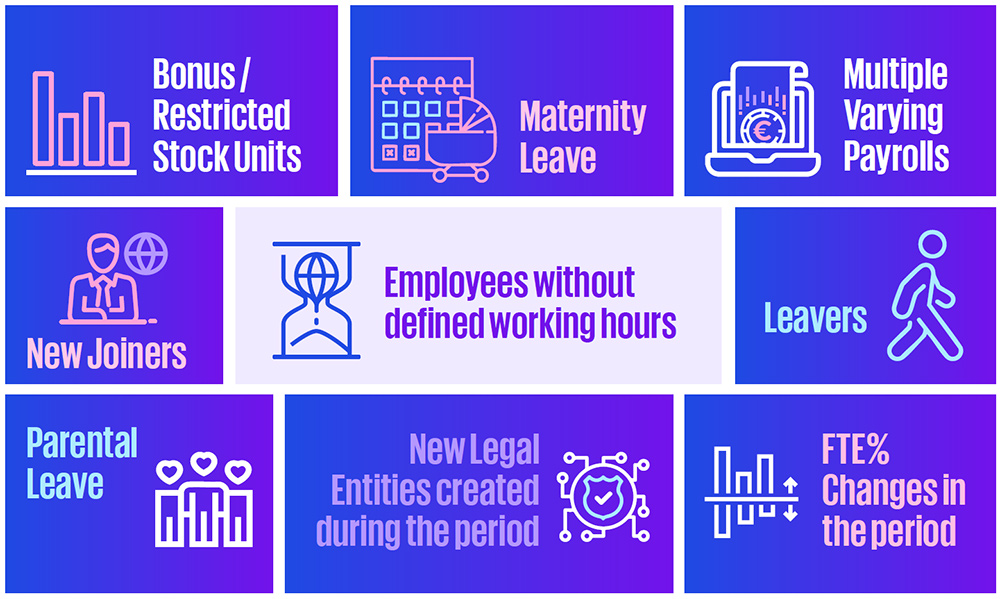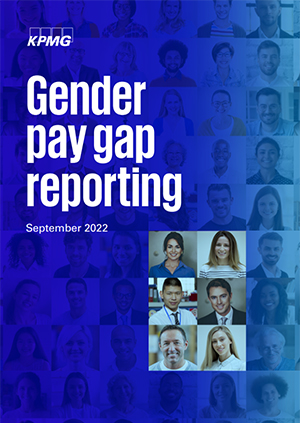June 2025
Pursuant to the Gender Pay Gap Information Act 2021, employers in Ireland are required to analyse and account for the difference in the average hourly pay of women compared to men in their organisation.
Employers need to be aware that where a gender pay gap exists, this may negatively impact their brand, employee relations, public reputation and their ability to attract and retain talent.
A series of videos below featuring Aoife Newton, Director, KPMG Law LLP, outline the reporting requirements for employers in Ireland, as well as how KPMG Law LLP can help.
Mandatory Gender Pay Gap Reporting was introduced in Ireland with enactment of the Gender Pay Gap Information Act 2021. The Act was followed by the Employment Equality Act 1998 (Section 20A) (Gender Pay Gap Information) Regulations 2022 which resulted in the first reports being published in 2022 by all relevant employers with a headcount of 250 or more. This marked the roll out of a phased approach to annual reporting highlighting the differences in average pay between men and women.
The last 3 years of reporting has revealed some anomalies in the approach to reporting, leading to variable quality in published reports due to employers interpreting the legislation differently. At the same time, Ireland has made significant strides in gender pay gap reporting. Here we summarise the overall findings of mandatory gender pay gap reporting over the years to date:
2022 marked the first year of mandatory reporting for all employers with a headcount of 250 or more employees. This was the year where employers’ gender pay gap reports got the most attention from the media, given it was the first year where the gender imbalance was made more transparent and statistics were published to support the pay disparity between genders. Latest CSO results showed the average gap reported was 9.6 % across all industries in 2022.
This year saw the scope of relevant employers increase to all employers with a headcount of 150 or more employees. In line with prior years, the overall results continued to show disparities, with females earning less than males across the various industries. There continued to be a wide variance in the style of reports being issued with some reports more easily accessible and transparent than others. New regulations (the Employment Equality Act 1998 (Section 20A) (Gender Pay Gap Information) (Amendment) Regulations 2024) also introduced changes in the treatment of certain payments and benefits.
The reporting period of 2024 to 2025 will see the threshold further reduce to include employers with 50 or more employees.
On 8 March 2025, Minister Foley announced that a new gender pay gap reporting portal will be launched in autumn 2025. The announcement came to mark International Women’s Day. The portal will hopefully draw attention to the importance of gender pay gap reporting whilst making the results more accessible to the public and improving transparency. The Minister also announced that further amending regulations will issue in Spring/ Summer 2025.
Gender Pay Gap reporting in Ireland has been a significant issue, and the passing of the Gender Pay Gap Information Act 2021 has further emphasized the work that needs to be done to address the ongoing inequality that exists. Focus on this area is increasing with the EU Pay Transparency Directive (2023/970) which is due to be transposed into Irish law by June 2026.
Each year ensure you review the updated regulations which can significantly change the treatment of key pay items.
When approaching Gender Pay Gap analysis it can be very overwhelming. We have outlined a quick step by step guide below for our recommended approach:

The last 3 years of reporting have exposed recurring practical challenges some of which we have discussed in greater detail below:
Often leavers are only noticed at the end of the analysis when we review outliers. These employees stand out as having very low pay per hour as they left during the snapshot period. If leavers aren’t removed, they could greatly skew the overall Gender Pay Gap results of a company. Equally, each year relevant employees who have unpaid leave during the period pose practical challenges. To correctly account for these employees pay usually the unpaid leave is correctly captured in the payroll data. However, we must in turn apportion the hours for the purposes of the calculation. Getting accurate data in relation to unpaid hours has proved challenging.
Many companies have contracted hours which can be used for the purposes of the Gender Pay Gap calculations. However, we have seen many companies whereby, there are not defined working hours for every relevant employee and so to ensure accuracy in calculations we must work out actual hours worked during the snapshot period, which often can require complex calculations and data analysis. Going forward as the scope of the relevant employer threshold is reduced to 50 employees or more we would expect this issue to be more challenging.
Over the years understanding how to classify RSU’s and stock options have been a practical challenge. As per the updated legislation, when a stock option or RSU is granted, then the value of the stock at the date of grant should be included in the BIK calculation. This classification of stock options and RSU’s can be particularly challenging to identify in payroll files. Different rules apply to the grant of shares.
The last 3 years of reporting have exposed significant anomalies and failings in the legislation, leading to variable quality in published reports due to companies interpreting the legislation differently.
Employment Act 1998 Section 20(A) (Gender Pay Gap Information) (Amendment) Regulations 2024 clarified these varying interpretations.
The most notable amendments were:
In 2023 many employers included share options and interest in shares within the bonus metric. However, the amendments made to the legislation in 2024 saw large movements in companies bonus gap following the exclusion of share options and interests in shares, RSU’s from bonus and reclassifying them as Benefit in Kind. BIK metric is reported as the % of employees, male and female in receipt of BIK rather than the gap in value between genders. Many companies have universal benefits implemented for every employee. As such, it is common for an employer to report 100% of their employees, both male and female to be in receipt of BIK.
Lastly in a snapshot please see below the significant changes to Gender Pay Gap reporting legislation between 2024 and 2025 for you to consider for the upcoming reporting period:
These changes aim to increase transparency and ensure a more comprehensive understanding of the gender pay gap across various sizes of employers.
KPMG Law LLP can assist your teams in preparing for the introduction of Gender Pay Gap (“GPG”) reporting in Ireland. We can make your stakeholders aware of the issues, prepare a current “as is” analysis of your payroll to assess the current status of your organisation and provide a communication and action plan to address and explain any gaps arising.
KPMG Law LLP can host a workshop/meeting with your stakeholders, to share insights on the practical challenges of GPG, what we learned from the previous reporting years, and what next steps to take to communicate and take action to reduce your GPG.
Our data analytics tool can analyse your organisation’s payroll data and prepare a detailed review and report by age, location, seniority of employees, functions and / or job titles. It can also assist with identifying the potential root causes of any GPG and KPMG Law LLP can then advise on actions to address the GPG.
Develop practical communications or guidance for your stakeholders on GPG reporting, taking action to reduce the GPG and feeding into other gender, inclusion and diversity initiatives. Gender pay gap reporting is likely to generate ongoing and evolving issues to discuss (e.g. diversity reporting, equal pay auditing etc.)
In appropriate circumstances our advice can be provided under legal advice privilege to allow you to look at your data and strategy in a protected way.
Contact us now to understand the impact of gender pay gap reporting on your business and diversity agenda.

Download PDF
Gender pay gap reporting
See our published articles below, discussing more recent developments to gender pay gap reporting obligations.